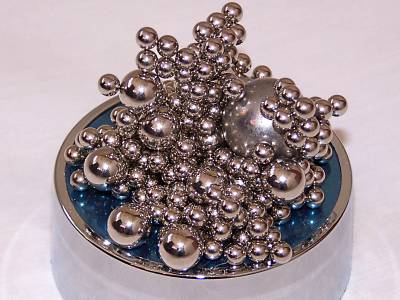Energy storage system 'MOST' used for winter keeping the heat of summer under study under study

By John Westrock
Some people may have thought that "You can save this heat in any case and use it as a heating in winter" when being struck by the unpalatable summer heat. In reality it is difficult to keep thermal energy forever and it was not easy to utilize summer heat in winter, but the newly developed system " MOST " is a totally different way , It is a system that can confine heat in molecules and reuse it.
Emissions-free energy system saves heat from the summer sun for winter | Chalmers
https://www.chalmers.se/en/departments/chem/news/Pages/Emissions-free-energy-system-saves-heat-from-the-summer-sun-for-winter-.aspx
New emissions-free energy system could save heat from the summer sun for winter
https://knowridge.com/2018/10/new-emissions-free-energy-system-could-save-heat-from-the-summer-sun-for-winter/
MOST is a system developed by a research group of " Chalmers Institute of Technology " located in Sweden, one of the prestigious universities in Europe. It is a mechanism that stores thermal energy in special form in another form, converts it to heat when necessary, and extracts energy.

"Special molecule" is composed of carbon, hydrogen, and nitrogen, and it has the characteristic that it converts into energy enriched isomer when receiving sunlight. Isomer refers to a substance that has the same kind of atoms but has a different structure.
In this system, the isomers are in the form of liquid and can be stored with stored energy. And when you need it such as night and winter you can take out heat. In addition, because it is a liquid, it can be incorporated into existing solar systems, and the name MOST is taken from " Mo lecular S olar T hermal Energy Storage" (molecular solar thermal energy storage).
The idea itself had existed since a relatively long time, and the research group has been researching for many years. It seems that in 2017, a major advance in technology resulted in a big step forward for practical application. Kasper Moth-Poulsen, leader of the research group, says, "Energy stored in this isomer can be stored for up to 18 years, at the stage of taking out that energy and using it, I was able to take out a lot of heat. "
Catalysts are built into the system, and heat is generated when liquids containing isomers pass through a filter-like catalyst. By the heat generated at that time it is possible to heat the water whose temperature is 20 degrees Celsius to 83 degrees, and the warmed water can be used for heating and so on. In addition, the molecules of the isomer passing through the catalyst return to their original structure, so it can be recycled back to the solar system to capture heat. In this way, it is said that a non-disposable, circulatable heat exchange and storage system has been realized.

By carina
One of the major accomplishments of this presentation is the improvement of the necessity to use flammable toluene for liquids in the past. When toluene circulates in the system, the danger of fire increases, so it was not realistic to use it in ordinary households, but it became possible to use a new liquid that does not depend on toluene Thanks to that, it seems that we could evolve into a highly secure system.
It is also a big feature that MOST is a system that does not emit carbon dioxide when saving energy or retrieving energy. Of course, it is necessary to consider the total carbon footprint such as the manufacturing process of the molecule, but the mechanism that was not available, "to store the heat in another form and take it out when necessary" We may occupy an important position within.
The research group is planning to further advance research to realize a device capable of heating up to 110 degrees by further enhancing heat extraction performance, and it is said that it is aiming for practical use within the next 10 years · 2028 .
Related Posts:
in Science, Posted by darkhorse_log







